Narcotics Anonymous (NA) is a global, community-based organization with a multilingual and multicultural membership. NA was founded in 1953 and has since been offering a recovery process and peer support network for individuals who are struggling with substance abuse and addiction. The primary purpose of NA is to enable its members to stay sober and help others achieve sobriety through a 12-step program that includes regular meetings and personal development practices. Yet, relapse prevention can take many forms in addition to NA, such as a sober living arrangement. If you need to know more about NA, sober living, sober living services, as well as treatment planning and placement, the following information should prove valuable.
What Does the Narcotics Anonymous Symbol Mean?
One of the most recognizable aspects of Narcotics Anonymous is its symbol. But what does this symbol represent, and why is it so significant to those in the recovery community?
The Narcotics Anonymous symbol consists of a circle with a diamond in the center. The circle signifies unity and worldwide recovery, reminding members that they are part of a global community that transcends individual differences. The diamond stands for the four key principles that are central to the recovery process: honesty, open-mindedness, willingness, and sincerity. Each point of the diamond corresponds to one of these principles, which are considered essential for personal growth and recovery.
Moreover, the symbol as a whole represents the strength and resilience of the human spirit in overcoming addiction. It serves as a beacon of hope and a constant reminder that recovery is possible with the support of the NA community and adherence to its principles.
As we think about the NA symbol and what NA represents, we need to also think of other ways to prevent relapse. Recovery from addiction is a multifaceted process that often requires more than attending meetings and working the steps. One effective approach to preventing relapse is participating in a sober living program.
What Is Sober Living?
Sober living refers to a structured, supportive environment where individuals in recovery can live together. These homes are designed to bridge the gap between an inpatient facility and the real world.
In a sober living home, residents are typically required to follow house rules, participate in household chores, maintain sobriety, and often engage in therapy or support group meetings. The goal is to provide a stable and drug-free environment that supports residents’ efforts to rebuild their lives and develop healthy coping mechanisms outside the structured setting of a rehabilitation center.
Benefits of Sober Living
Sober living homes offer numerous benefits, including peer support, accountability, and the opportunity to practice living a sober lifestyle in a less restrictive, yet supportive, environment. Residents learn to navigate daily challenges, manage their time and responsibilities, and build a support network—all crucial skills for long-term recovery.
For those considering the next step in their recovery journey, a sober living program in Texas could be an excellent option. Texas offers a wide range of sober living homes that cater to different needs and preferences, providing a supportive community and the necessary resources to help individuals maintain their sobriety. These programs emphasize the importance of a balanced lifestyle, incorporating both individual and group therapy, recreational activities, and vocational support to encourage personal growth and independence.
Get the Help You Need With Sober Living
While the Narcotics Anonymous symbol famously represents the core values and unity of the NA community, recovery from addiction often requires additional support and structure. Sober living programs offer an invaluable resource for individuals seeking to strengthen their sobriety in a supportive, communal setting. If you or a loved one is on the path to recovery, consider the benefits of a sober living program in Texas as a next step toward a fulfilling, sober life.

